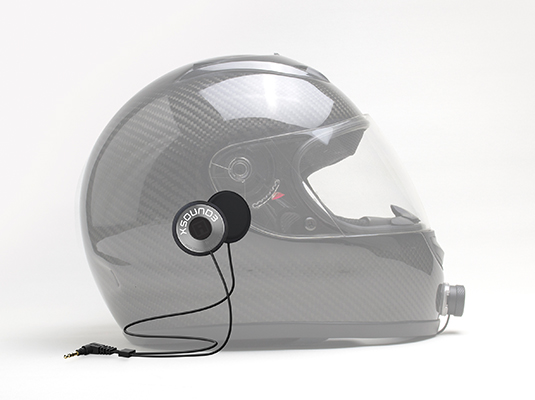ABOUT US
About Helmet Speakers
Why helmet speakers?
Helmet speakers are a popular audio solution for motorcycle riders, snowmobilers, snowboarders, and others for whom conventional earbuds are not practical to use. Earbuds and helmets do not, generally speaking, get along. Putting aside the fact that wearing earbuds while operating a vehicle is illegal in many areas because they block environmental sound, pulling a helmet on over earbuds without ripping them out of the ear is not easy.
Once on the road, the volume levels necessary to make music audible can cause permanent hearing loss, since earbuds rest very close to the delicate eardrum. Additionally, because earbuds occlude the ear canal, they can cause pain, discomfort, and mechanical overheating in the ear when worn for more than a couple of hours at a time. Lastly, wires hanging loose from the helmet can interfere with freedom of movement and might attract unwanted attention from traffic police.
Helmet speakers, on the other hand, are optimized acoustically and ergonomically for helmets, making them a comfortable and convenient alternative to earbuds for helmet-bound music lovers. Because they do not occlude the ear canal, helmet speakers are more comfortable than earbuds, and will not overheat the ear. Some helmet speakers feature specially designed wiring that runs behind the head so it can be tucked into the helmet lining; they also plug into your device using a detachable extension to make removing your helmet while leaving the speakers inside easier. Many states that ban earbuds while riding have no such restrictions for helmet speakers since they do not completely block environmental sound, allowing riders to maintain situational awareness. When paired with earplugs, high-quality helmet speakers are a safer way to listen to music while on the go.
Choosing a helmet speaker and installation
Before purchasing a pair of helmet speakers, you should consider the following
- Audio and communications devices, including helmet speakers, are illegal to use while operating a vehicle in some locations. Motorcycle, scooter, and snowmobile owners should make sure their local regulations permit the use of helmet speakers, and also be aware of possible changes to traffic laws when crossing state or national borders.
- Some helmet brands are designed to fit more tightly than others. Make sure that your helmet can comfortably accommodate the addition of helmet speakers on both sides.
- Like conventional headphones, helmet speakers do not all sound alike. Some are tuned for heavier bass, for example, while others are engineered to sound more natural. Choose a helmet speaker according to your personal audio preferences.

Use & Care
- Please follow all operating guidelines and parameters of the audio source device with which you are using the speakers.
Keep the speakers clean and dry. - Do not attempt to disassemble the speakers, or alter and modify the wires.
- Do not drop, knock, or shake the speakers.
- Do not use harsh chemicals, cleaning solvents, or strong detergents to clean the speakers.
- More help at FAQ

Caution
It is dangerous to ride a motorcycle or engage in sports activities while being unaware of your surroundings. Only use your XSound 3 and XSound 2.1 Helmet Speakers at volume levels at which you can still remain alert of what’s around you.
- Please check your state and federal laws for using helmet audio while operating a motorized vehicle.
- Do not operate your audio source device at high audio volumes when using XSound 3/2.1 Helmet Speakers.
- Hearing experts advise against continuous exposure to high volume levels. If you experience ringing in your ears, discontinue using the speakers.
